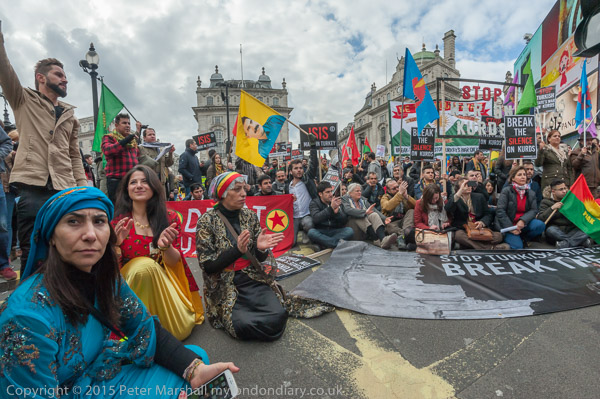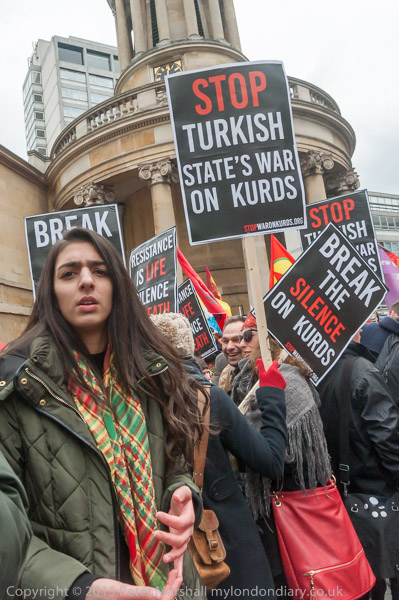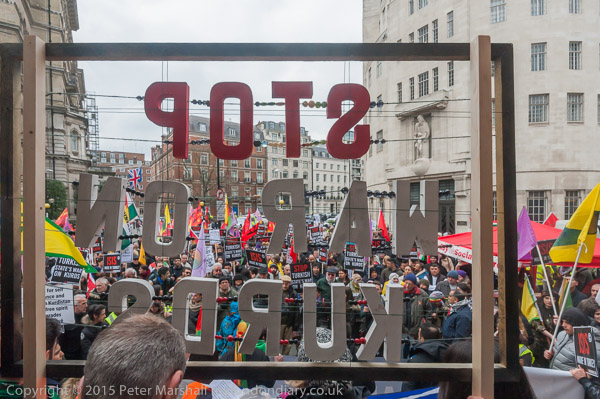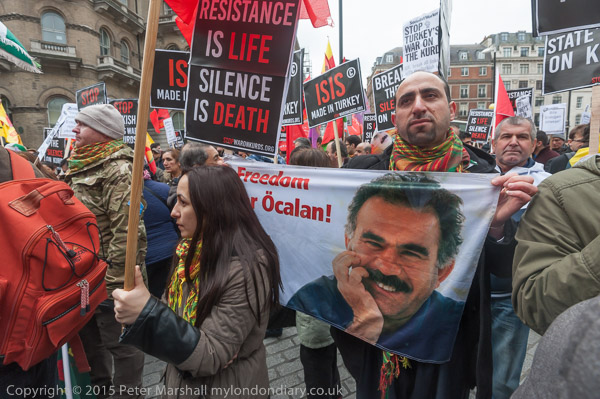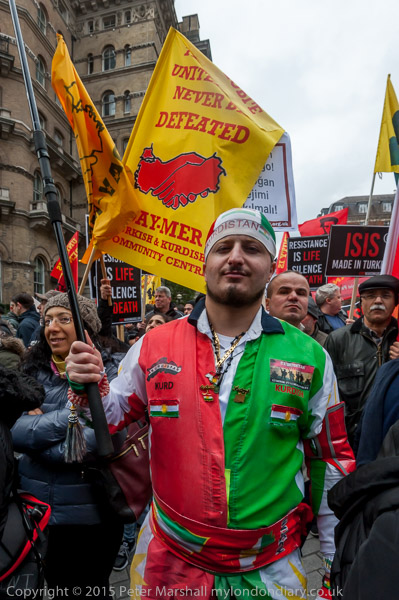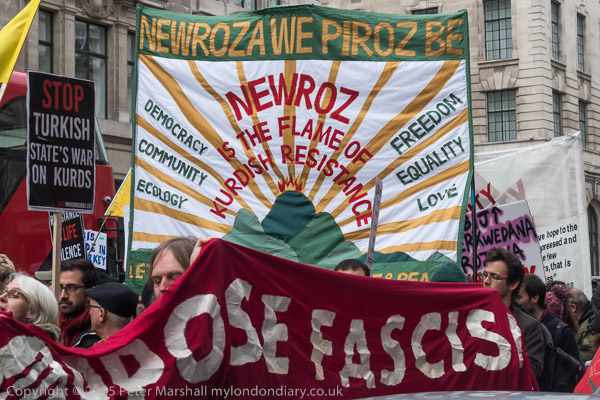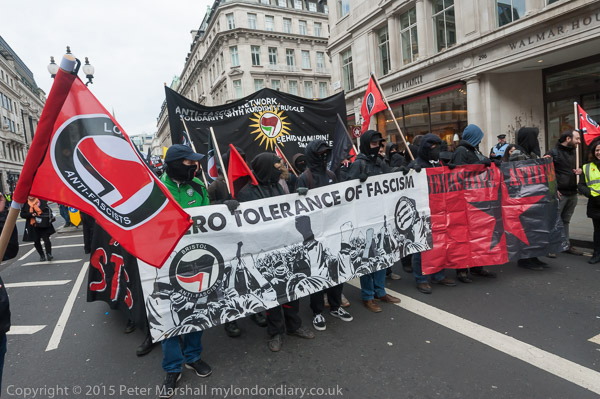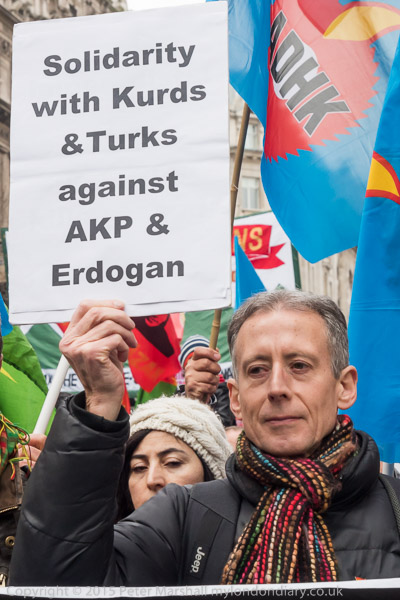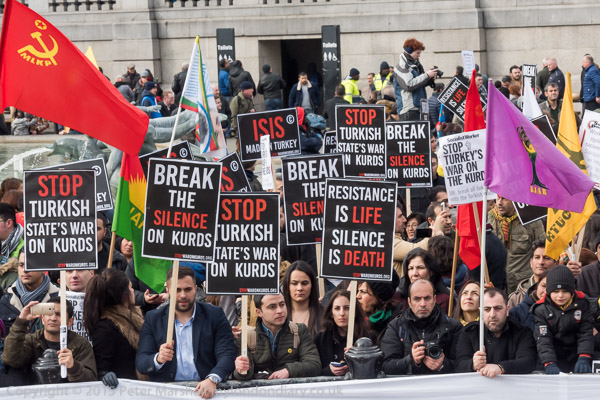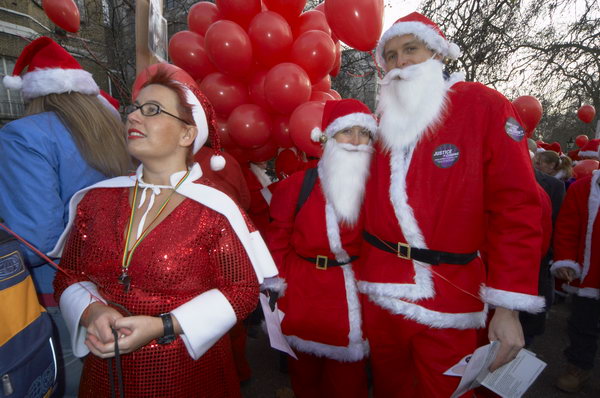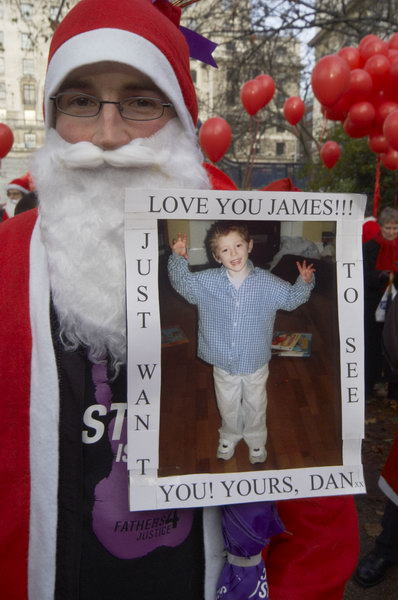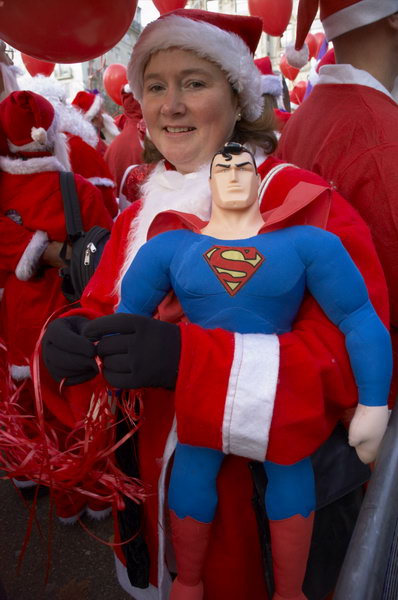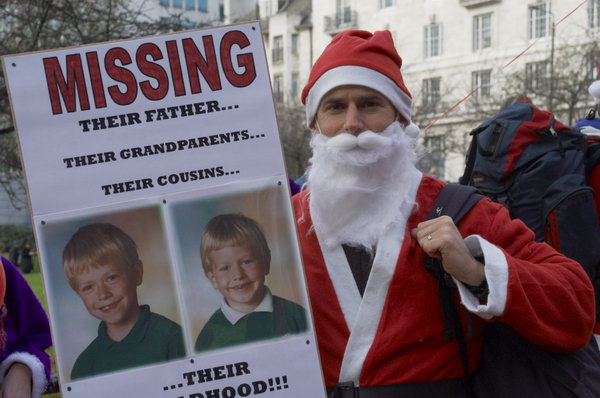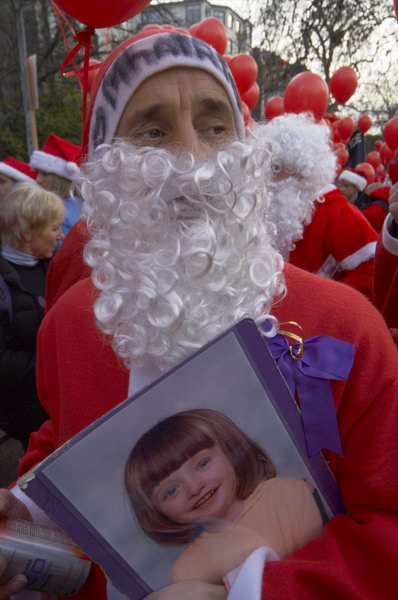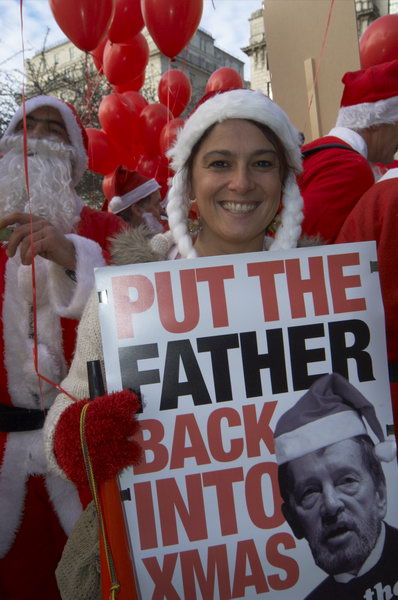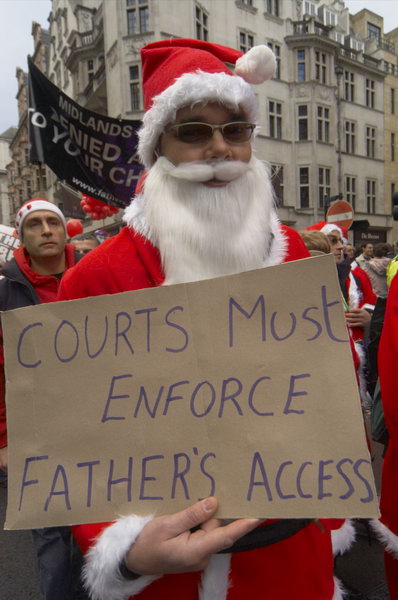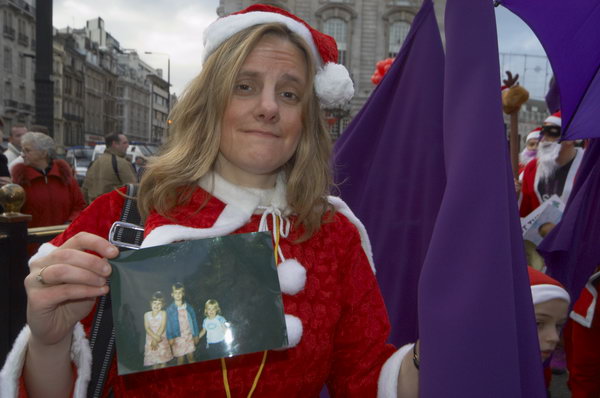Battersea, Jesus, Bonkers & Peckham: On Saturday 19 July 2008 I began my day at an open day at Battersea Power Station by developers proposing a comprehensive redevelopment before photographing the Jesus Army marching along Piccadilly and, going on to Camberwell Green for Bonkersfest and a brief visit to I Love Peckham.
Battersea Power Station
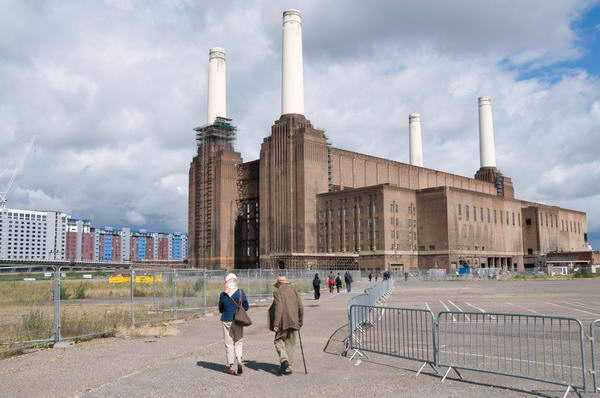
Developers Real Estate Opportunities had bought the site for around £400 million and were showing the latest development of their plans for it to the public. These then involved re-building the chimneys and filling the space around with various buildings including an eco-dome and a 980ft eco-tower which dwarfed the power station – and which London Mayor Boris Johnson described as an “inverted toilet-roll holder”. You can see it in my photograph of their model on My London Diary, and to be fair I think it perhaps looks more like some high-tech lavatory brush.
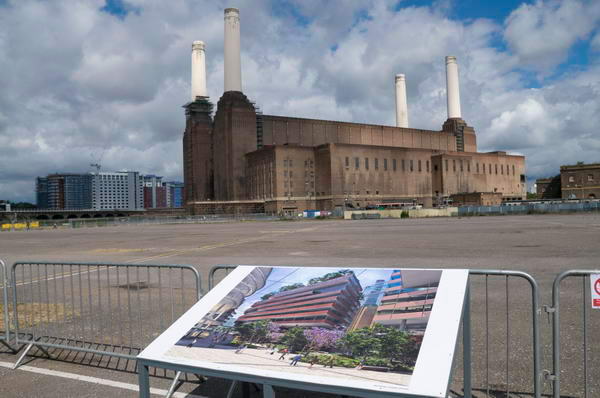
This tower was soon dropped from the scheme which was approved in 2010 but building never started. The only aspect of the scheme which did eventually get built was the Northern Line extension from Kennington, partly because of a £100 million contribution from the sale of the site to a Malaysian consortium in 2012 – who ten years later opened the power station building to the public.
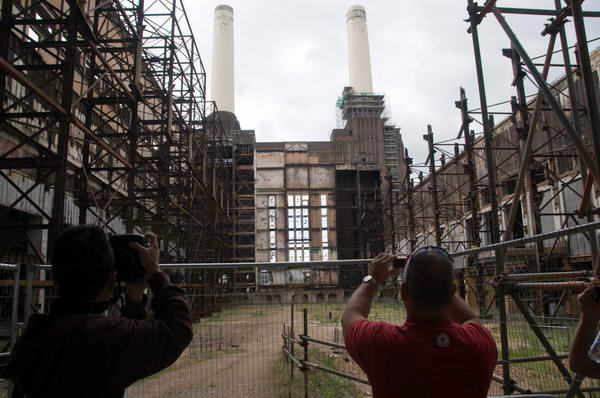
The central turbine hall had been open to the elements since the late 1980s when the roof was removed to lift out the machinery.
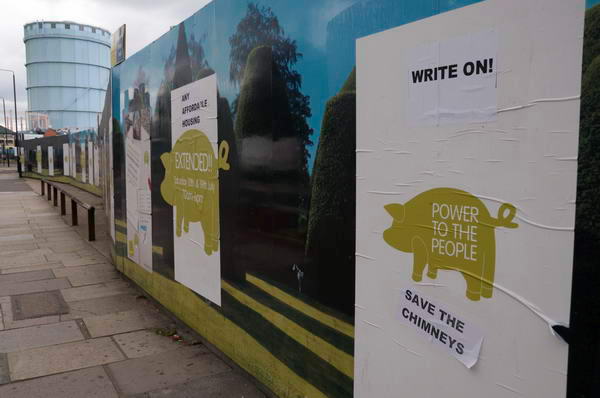
Local organisations had been formed in the 1980s to oppose unsuitable development and were then still active and asking questions about the proposals. They were concerned both about the loss of the power station as an iconic landmark and also the lack of affordable housing and facilities of any use to local people in the plans. The web site I linked to in 2008 is no longer active and the domain is for sale.
More on My London Diary at Battersea Power Station.
Jesus Army Marches on London – Piccadilly
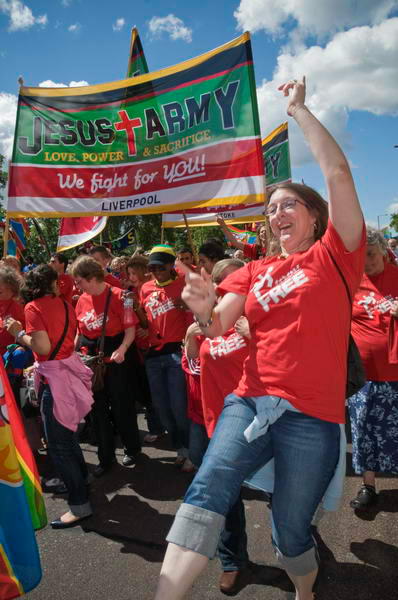
The Jesus Army describes itself as “an evangelical Christian Church with a charismatic emphasis” while others have labelled it as a sect or a cult. There are certainly ex-members who talk openly about it, and particularly about leaving it as a traumatic experience, while others simply feel that they could not personally give the level of commitment it requires of them.
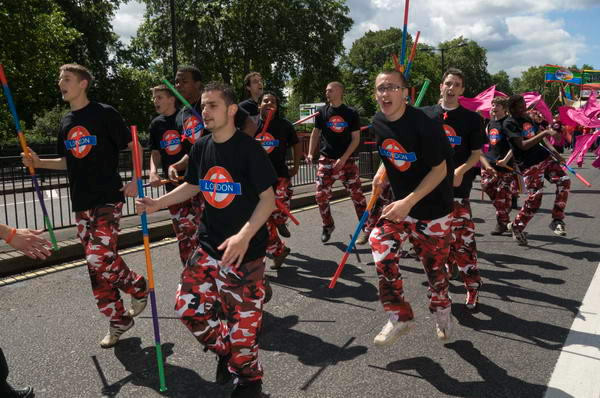
I found their march through London a dispiriting event, too uniform in many ways and I soon found it depressing to photograph. But as I told the woman who came out of the crowd passing by to hug me, “Jesus loves you too, sister” although I’m sure the guy I’ve read about in the gospels would have had no truck with this organisation. London Transport might have a problem with their logo [on some t-shirts] too!
Bonkersfest – Camberwell Green
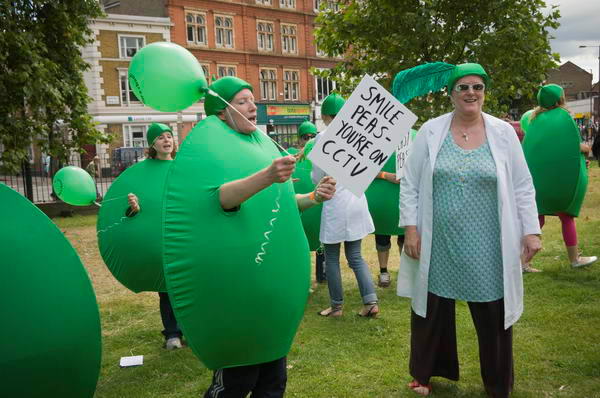
Creative Routes, an interdisciplinary arts organisation run by and for those who have survived the mental health system and mental distress, organise the annual Bonkersfest as “a showcase of mad creativity.”

I wasn’t greatly impressed by what I saw happening this year, and left after taking a few pictures, including those of “some enterprising women were making the most of the occasion by organising a yard sale” in front of Brighton House on the edge of the green and a small memorial which had been unveiled in 2007 to the Wright family and four others killed by a direct bomb hit on the shelter here on the afternoon of 17th September 1940.

They had taken shelter while celebrating the wedding of Sidney and Patricia Wright. Bride and groom, Sidney’s parents and five sisters were among the 13 who were killed.
I Love Peckham – Peckham Square

There is an energy about Peckham that I really do like, and some of it was on display here, watched by a small crowd including the Mayor of Southwark, Councillor Eliza Mann – in pink.

There were a few things going on for me to photograph, and clearly there had been various other mainly art-related activities by local people, particularly children in the week of the festival, but it seemed to have attracted rather less interest than the previous year when I had photographer the march of the human rights jukebox.

More on My London Diary I Love Peckham.
Flickr – Facebook – My London Diary – Hull Photos – Lea Valley – Paris
London’s Industrial Heritage – London Photos
All photographs on this page are copyright © Peter Marshall.
Contact me to buy prints or licence to reproduce.
